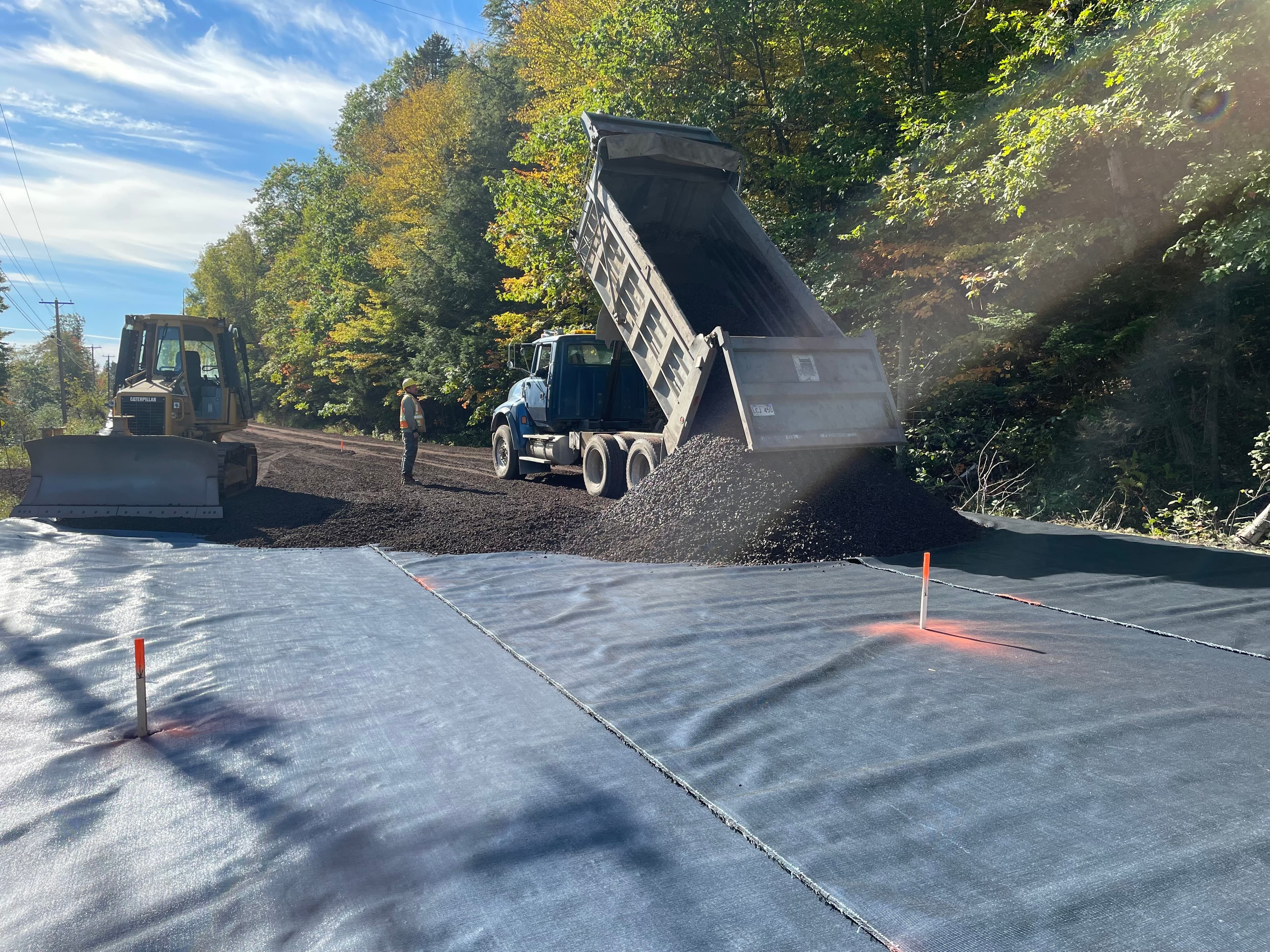What are geomembranes? A guide to understanding geomembranes and their uses
A clear, authoritative guide to geomembranes – what they are, how they’re made, and how they protect soil and water in modern engineering.
>
A clear guide to geotextiles: how they work, core functions, types, benefits, and engineering applications across roads, mining, waste, water and coastal systems.

What are geomembranes? A guide to understanding geomembranes and their uses
A clear, authoritative guide to geomembranes – what they are, how they’re made, and how they protect soil and water in modern engineering.
How to simplify product selection for the right asphalt interlayer
Solmax’s Paving Product Selector tool helps engineers choose the correct MIRAGRID product for asphalt overlays. It evaluates road condition, traffic load, overlay thickness, and requirements to provide tailored recommendations and tender-ready specs.
How to minimize leakage rates in geomembrane liners to optimize performance
Leakage rates of geomembranes vary significantly by material and quality. HDPE geomembranes show superior performance, with advanced conductive liners enabling precise leak detection for critical containment applications.
Do geosynthetic clay liners require prehydration?
Gain insights on geosynthetic clay liner prehydration, conditions requiring prehydration, and studies supporting optimal GCL performance.
How geosynthetics enhance agricultural productivity in arid regions
Geosynthetics enhance water management in Morocco’s arid agricultural sector by reducing water loss, improving irrigation, and stabilizing infrastructure. Their use supports food security, sustainability, and resilience in water-stressed regions worldwide.
How GEOTUBE dewatering technology helped to restore a river’s ecology
The demolition of dams on La Sélune River in Normandy, France, and the use GEOTUBE dewatering containers restored ecology and biodiversity in the river.
An important step towards a circular economy
Solmax advances a circular economy by recycling production waste into high-quality nonwovens, utilizing cutting-edge technology for sustainable material reuse.
Why your choice of rod for extrusion welding matters
The effectiveness of extrusion welding hinges on selecting welding rods that are compatible with geomembrane materials, ensuring robust and durable seams.
How to perform proper quality management on geomembranes
Proper quality management of geomembranes involves both Construction Quality Control and Assurance, focusing on comprehensive testing and regular inspections to ensure durability and functionality.
How to prevent toe leakage in flexible vertical barrier walls
Toe leakage in vertical barrier walls threatens containment. This blog explains how to ensure effective sealing at the base using proven geosynthetic techniques.
How do you select geosynthetics for biogas containment systems?
Geosynthetics such as HDPE geomembranes are selected for biogas containment based on UV resistance, durability, and mechanical strength.
How do you know which textured geomembrane to select?
Selecting the right textured geomembrane involves understanding the specific application needs such as interface friction with soil or other materials, which dictate whether a smooth or textured surface is more suitable.
Development of sustainable and high-quality construction design
Norbert Wagner, Chairman of the Geosynthetics Industry Association (IVG) and ex-Managing Director of Solmax Germany, discusses the evolution from non-wovens to pioneering building materials.
A focus on sustainability - interview with Jürgen Gruber, Director of Marketing and Sales
Jürgen Gruber discusses the company's sustainability-focused practices and strategies, highlighting their alignment with Europe's environmental goals and ongoing efforts to innovate eco-friendly solutions in the geosynthetics industry.
Reducing carbon footprint in marine structures
Modern marine structures are reducing their carbon footprint by using GEOTUBE technology and comprehensive lifecycle assessments, enabling more sustainable construction practices and environmental conservation.
Is a GCL with granular bentonite really better than one with powder?
Is granular bentonite more effective than powdered bentonite in geosynthetic clay liners, considering water retention, permeability, and environmental conditions such as temperature, which influence their performance in landfill barriers.
How to enhance road longevity with MIRAGRID® asphalt interlayers
MIRAGRID asphalt interlayers significantly extend road service life by enhancing crack resistance and reducing maintenance needs, leveraging innovative geocomposite technology for durable road construction.
How to achieve sustainable dewatering with GEOTUBE
GEOTUBE technology supports sustainable dewatering by reducing energy needs and enhancing water purification, catering to various projects with customized, environmentally-friendly approaches.
How can textured geomembranes be used in waste landfill designs
Textured geomembranes enhance landfill design by improving slope stability and interface shear strength.